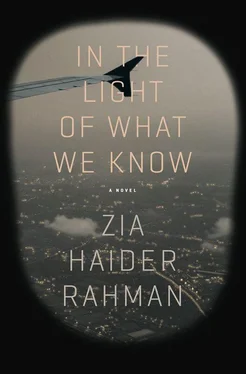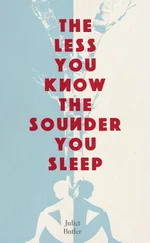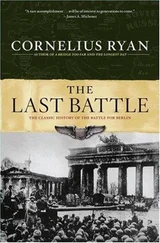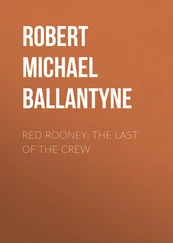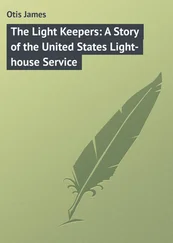Zafar seemed rather carried away with his praise of America, and it’s quite possible that I let out a smile. After a few moments, he picked up his story.
With the F-15 Eagle at our side, he continued, we flew over some of the most dramatic terrain I had ever seen. Small aircraft do not generally fly at high altitudes, and the shadows of the morning’s slanting sun accentuated the relief of the land, the two planes casting darting shadows over the landscape, so that it was hardly a stretch to imagine us wefting and warping between the mountains and hills of northeast Afghanistan. Somewhere not far away in the vastness of the Tora Bora mountains, we were told in those days, was Osama Bin Laden, a hunted man even before his proud claim of responsibility and, we thought, soon to be found. As I looked out the window, I saw a land bleaker and more beautiful than anything I had seen in Bangladesh, and I could see how this place of hard habitation bloomed a romance that condemned it to Western intrigue. The Afghanistan below me was austere — there was no grass, not the least blade; it was neither lush and verdant nor wet, as Bangladesh was, but instead it was a land of dusty, earthy tones. Whereas my beautiful Sylhet sang the song of seasons, of a yearly cycle, Afghanistan’s barren, ragged desolation moaned a long dirge of ancient wonder, the earth’s broken features ready to receive fallen horsemen, the lost traveler, and all the butchered tribes. I understood why the European was drawn to such a place, saw why he would want to walk the numberless silk roads that crisscrossed this stretch of Central Asia, and, in my mind’s ear, I heard the homilies of British colonials and postcolonials who broke bread with the natives to return home with wondrous stories of having survived the mountains and the Muslim horde, or to proclaim the Afghan’s humanity and to stress with limitless piety the need to build bridges across cultures.
At a safe distance, the plane followed the line of an escarpment, broken here and there by the odd craggy outcrop, and I imagined that if I closed one eye, I could extend my finger and run it along the sharp edge. I thought of the contour maps that mountaineers and orienteers use, maps that by means of lines joining points of the same height gave you a feel in two dimensions for the three-dimensional relief of the known world. There was a time when you saw the same idea on weather maps on television, isobars, those curved lines of equal air pressure, before everything became simpler still with bright petaled suns, such as a child might paint, and bubbly clouds. Maps, contour maps and all maps, intrigue us for the metaphors that they are: tools to give us a sense of something whose truth is far richer but without which we would perceive nothing and never find our bearings. That’s what maps mysteriously do: They obliterate information to provide some information at all.
Like the London Underground map, I said.
It never tells you, said Zafar, where on earth any given station is. In one sense, it’s no map at all but a diagram; it’s not topographical but topological, and the question is always: What use is imagined for the map? Harry Beck, the man who designed it, must have realized that when you’re riding an underground train, you don’t really care about geographical location or distances. Famously, if you kept to the map, to get from Bank Station to Mansion House you would take the Central Line train to Liverpool Street, change onto the Circle Line, and get off five stops later, at Mansion House. But when you got to street level you would look down the road and discover that you’d traveled barely four hundred yards. The map helps you navigate your way around its own schematic world and requires you to abandon the reality of tarmac and buildings and parks. Only afterward do you step out and again find London.*
Thoughts of topographic maps visited me in that cabin as I looked over the vales below. I didn’t speak to the other passengers, exchanged not so much as one pleasantry, and when the bright sun rushed out from behind a cloud, I hid my face in a copy of Dante’s Inferno , which Emily had sent to me when I was in hospital. I was once the patient of a psychiatric hospital.
If Zafar’s eyes contained a confirmation of the accusation I felt in his words, I did not see it. I remembered, of course. But it was an unpleasant memory, for a number of reasons, and I’m ashamed to say that between Zafar’s landing on my doorstep and his reminding me then, I had not once recalled any aspect of that episode. If anything, I’d suppressed it.
We arrived, he continued, at Bagram air base outside Kabul. The line of mountains rose beneath the sun, but it was an impotent sun, bright but without heat, so that when the door of the aircraft opened and I stepped out behind Mary Robinson and Sila Jalaluddin, the cold March air came as a cracking slap across the face. That is how Afghanistan greeted me.
* * *
A Land Rover drove me to AfDARI, the Afghan Development, Aid, and Reconstruction Institute, near Shar-e-Naw, an organization that I came to understand had yet to earn its grand name. The vehicle tore through every crossroad; at that time, ISAF* soldiers had been instructed never to stop on their routes, so mayhem ensued in a city now overrun by Land Rovers, Pajeros, Land Cruisers, and monster Humvees. At AfDARI, I was taken to the guesthouse by an orderly, who motioned directions to me. We passed a shared washroom outside the bedroom, with a toilet and a large bucket of water in which a tin cup floated on the surface. The room was bare apart from a single bed, a pile of blankets, and a small table beside the bed, with three legs, though one, I noticed, appeared to have come from another table, its color and shape quite different, and its length, too, giving the table a slight tilt. Paint flaking away from the walls suggested another history, and already I felt that this place contained an allegation against someone. The orderly pointed to an electrical outlet near the door, waved his hand, and shook his head. Either it didn’t work or I was not to use it; I supposed it was the latter, since if it didn’t work, I’d have found that out myself, and he needn’t be fussing. In the opposing corner, a bukhari , the kerosene heater that I would see everywhere, had yet to be turned on. Behind me, I noticed that the door to the room had a lock and key. There were windows facing onto the courtyard, with curtains partially drawn. On the other side of the room, there was what appeared to be another window, looking out the back. When I took a step closer to it, I saw that the bedside cabinet, a veneered chipboard thing, was wedged under a door handle and that the cabinet itself stood on some pieces of wood, presumably to bring it up to the right height. What looked first like a window was actually the upper part of a door, with the cabinet acting as makeshift lock. It was, I noted, an exit route. Through the glass pane, I saw the outline of a leafless tree, its branches dividing endlessly and dark as if dipped in pitch, and I thought of the X-ray image of a blackened, cancerous lung, the image intended to frighten us.
What I first learned about AfDARI came from the program manager, Suleiman, who visited me in my room shortly after my arrival late in the afternoon. AfDARI had been established by Australia’s overseas aid agency, with Taliban acquiescence, a few years after the Soviet withdrawal in the early 1990s, though its funding had come from a variety of sources. It was involved in a number of small aid and development activities primarily focused on Mazar-e-Sharif, Kandahar, and, of course, Kabul, but was now being sidelined by UNAMA,* he explained. Suleiman was a tall young man, without a beard and dressed in Western clothes, which raised the obvious question of whether his appearance had been different in Taliban days, which is to say only a few months before. He had, he would explain, spent two years at Indiana University in the U.S., which suggested that he came from a well-connected family, and he was now second in command at the institute. Suleiman’s most distinctive feature by far was his eyes, not their color, a tepid gray, nor their great arching eyelashes, but the manner of their movement, the intermittent darting here and there, toward the door, the windows, and later, outside, around about him. They called to mind small mammals, mice or rabbits, the kind that share their habitat with predators and know their only advantages are their alertness and nimble feet, advantages that could win them a few decisive seconds. If there had been any hint of darkness about him, I would have taken it then for evidence of fear.
Читать дальше
